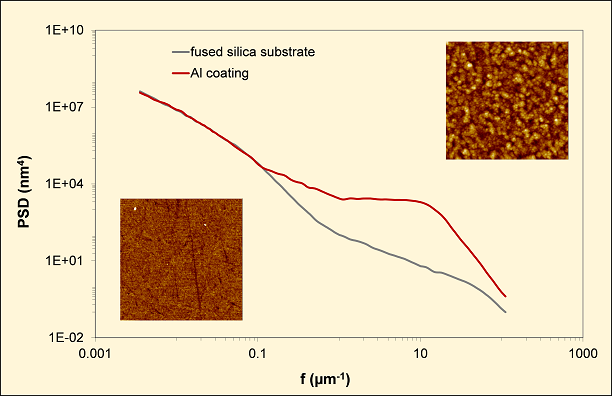A variety of profilometric methods have become established for the characterization of nanostructures on surfaces and thin film coatings such as Atomic Force Microscopy and White Light Interferometry. Usually, only simple but intuitive roughness parameters are retrieved from the measured surface profiles. These, however, contain only parts of the roughness information, such as the vertical dimension (rms roughness).
The use of Power Spectral Density functions (PSDs) enables a more comprehensive characterization of nanostructures. The PSD, which is merely the absolute square of the surface profile’s fourier spectrum, contains all information about both the vertical and the lateral structural properties.
In many cases, this roughness spectrum is directly relevant for the functional properties such as wetting or light scattering. In addition, PSD functions enable thin film growth and polishing processes to be investigated in detail. The results can be fed directly into optimization and modeling procedures. Furthermore, by using PSD functions, the results of different roughness measurement techniques can be combined and expressed in a uniform and convenient way.
